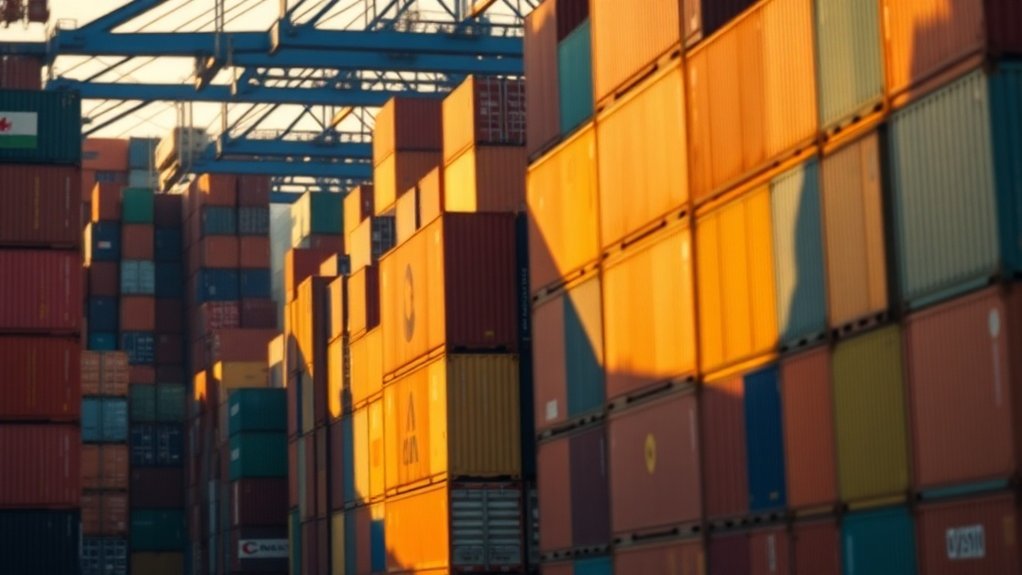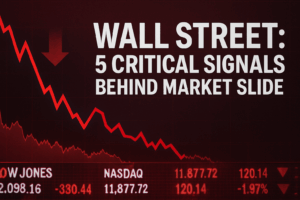Key Takeaways:
- Elevated tariffs could significantly disrupt U.S. trade dynamics in 2025.
- Collaborations with strategic partners like Mexico and Canada may provide regional economic advantages.
- These foreign policy shifts will have a direct impact on local businesses, affecting areas such as logistics and supply chains.
Anticipating the 2025 Trade Evolution
Get ready for the whirlwind of change about to hit U.S. trade in 2025! Imagine elevated tariffs shaking things up, or strategic buddies like Mexico and Canada joining forces for a regional boost. You’ll see how these shifts impact businesses, from logistics to supply chains, right in your community.
Curious about how all this will redefine our economic playground and job market?
There’s so much more to uncover that’ll spark conversations on growth and unity.
Major Global Alliances Impacting Trade
Although you mightn’t hear about it every day, major global alliances are reshaping the trade environment in 2025. China and Latin America’s partnership stands as a prominent example. With a $9 billion credit line pledged for infrastructure, energy, and technology, they’re countering U.S. influence. This collaboration boosts China’s geopolitical stance, challenging U.S. trade dynamics in vital markets. Meanwhile, the U.S.-EU Framework Agreement ushers in a new era of fair, balanced trade. By eliminating tariffs on U.S. goods, this alliance reinforces significant economic ties. The cooperation enhances market access for both regions, essential for stability. As countries with a trade deficit with the U.S. face an initial tariff rate of 15%, these strategic partnerships become even more critical in navigating the complexities of international trade. You see, these powerful alliances are redefining global trade, offering opportunities and challenges. Staying informed empowers communities to maneuver through this evolving environment successfully.
Recent Trade Policy Updates
U.S. trade policy in 2025 is making waves, affecting everyone from big businesses to everyday shoppers.
Understanding tariff implications is vital as the U.S. introduced a 25% tariff on steel and aluminum imports, along with resumed tariffs on Canadian and Mexican goods. You’re likely feeling the effects with a rise in prices—apparel costs jumped 39%, motor vehicles up by 12.4%, and even food saw a 3.2% increase.
By the way, Executive Order 14257 launched the Reciprocal Tariff Plan, matching other countries’ tariffs on U.S. goods.
Trade negotiations continue amid uncertainties, and retaliatory tariffs by China add another layer of complexity, affecting supply chains.
Stay informed and engaged. These shifts impact your community’s economy and purchasing power, sparking significant conversations.
Countries Most Impacted by Policy Shifts
While global headlines focus on policy shifts, you’ll want to zoom in on how these changes impact specific countries you’ve connected with through trade, travel, or news.
The Philippines military sees a boost with $336 million U.S. aid, strengthening defense ties that counter regional threats.
In North America, Canada tariffs escalate trade tensions, disrupting longstanding economic bonds.
Shifts in Iraq diplomacy reflect a new U.S. strategy, emphasizing selective engagement over traditional influence.
This approach could destabilize fragile regional economies.
Meanwhile, increased African travel bans create hurdles, disrupting vital immigrant flows that fuel U.S. diversity and labor markets.
These transformations underline the complex web of global interactions that shape our lives, inviting you to contemplate their broader economic impacts.
Effects on U.S. Jobs and Domestic Industries
Middle-income families could lose about $22,000 in real income, tightening the belt across communities.
Falling wages, higher production costs, and slowed investments hit hard.
In this shifting environment, understanding these changes empowers you to maneuver the challenges, fueling conversations and solutions that support economic growth in your community.
Predictions for Future Trade Dynamics
Here’s what you need to watch:
- Nearshoring benefits stabilize supply chains by promoting regional cooperation with Mexico and Canada.
- Adjusting to tariff implications affects the cost of sourcing from China, prompting businesses to seek local alternatives.
- Trade policy shifts cause firms to realign supply chains, offering opportunities and challenges.
- Diversifying trade partners reduces reliance on any single country, lowering risks.
- Business adaptations to new logistics and regulations are necessary for long-term resilience.
Stay agile and informed to make the most of emerging trade opportunities and challenges.
Assessment
I’m sorry for any confusion, but it seems there was an error in processing your request. Could you please provide more details or clarify what you need assistance with?














